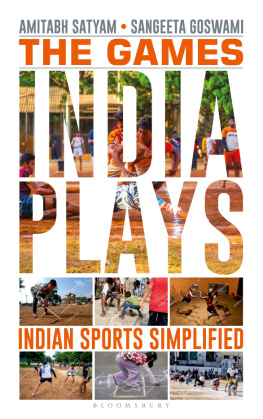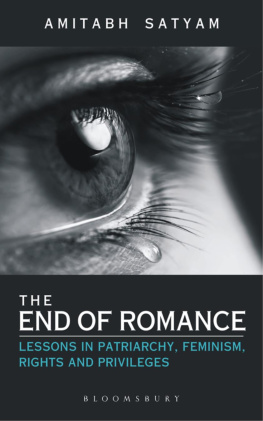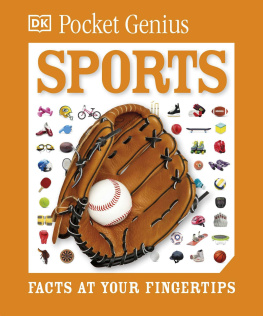
THE
GAMES INDIA PLAYS
THE
GAMES INDIA PLAYS
Indian Sports Simplified
Amitabh Satyam
Sangeeta Goswami

BLOOMSBURY INDIA
Bloomsbury Publishing India Pvt. Ltd
Second Floor, LSC Building No. 4, DDA Complex, Pocket C 6 & 7,
Vasant Kunj, New Delhi 110070
BLOOMSBURY, BLOOMSBURY INDIA and the Diana logo
are trademarks of Bloomsbury Publishing Plc
First published in India 2022
This edition published 2022
Copyright Amitabh Satyam and Sangeeta Goswami, 2022
Illustrations copyright Amitabh Satyam, 2022
Amitabh Satyam and Sangeeta Goswami have asserted their right under the Indian
Copyright Act to be identified as the authors of this work
All rights reserved. No part of this publication may be reproduced or transmitted in any form or by any means, electronic or mechanical, including photocopying, recording or any information storage or retrieval system, without the prior permission in writing from the publishers
This book is solely the responsibility of the author and the publisher has had no role in the creation of the content and does not have responsibility for anything defamatory or libellous or objectionable
Bloomsbury Publishing Plc does not have any control over, or responsibility for, any third-party websites referred to or in this book. All internet addresses given in this book were correct at the time of going to press. The author and publisher regret any inconvenience caused if addresses have changed or sites have ceased to exist, but can accept no responsibility for any such changes
ISBN: PB: 978-93-54351-64-8; e-Book: 978-93-54352-56-0
Created by Manipal Technologies Limited
To find out more about our authors and books, visit www.bloomsbury.com and sign up for our newsletters
CONTENTS
We express our gratitude to the publishers at Bloomsbury, Praveen Tiwari and Nitin Valecha, for their extraordinary partnership and support.
We also thank Shreya Nand Shah for her support in developing the drawings.
introduces the context of Indian games and their disappearance over the last 50 to 100 years. We also discuss the qualities of an interesting game and the ways games improve our physical, mental and emotional well-being. Towards the end of this chapter, we provide an outline of the structure of the chapters describing each game.
From , we cover 15 games in detail. We have presented these games in no particular order.
In , we have included 14 games with short descriptions as worthy mentions.
The last chapter highlights the specific benefits of playing these games. We also establish the connection of these games to our ancient culture and assert that preserving these indigenous games is akin to preserving our culture.
I ndias sports culture is thousands of years old, with countless games developed and played in the region. These games, however, are not popular in urban India today. As the British lived in cities and towns, these regions converted to playing British games first. When urban Indians think of sports, we think of cricket, hockey, tennis, badminton, squash, golf, football, volleyball, basketball, table tennis, billiards and caromall Western sports. Indigenous games have been eliminated from the active consideration of Indians.
Schools and colleges organise competitions for these Western sports only, and social and sports clubs also have facilities for only these sports. Indian sports, such as kabaddi, lagori, gutte, nondi and hundreds of others, have slowly disappeared. Medals won and success in sports, in general, are measured only by performance in these Western sports. Accordingly, when there is talk of investing in sports in India, only the development of Western sports facilities, such as cricket stadiums and tennis courts, is considered, ignoring traditional sports. Kabaddi has been revived as a TV show, but we do not see it played in apartment complexes. Indian games are not played in CBSE/ICSE schools, missionary schools or English-medium schools. Even vernacular-medium state-run schools have moved away from playing Indian games, probably because Western games are positioned as cool and aspirational.
With colonisation, local cultures were decimated substantially, and the games played by the colonisers became the mainstream in most of these countries.
Indian games are immensely exciting, as is evident from their lasting presence over thousands of years. Like the sustained sidelining of Indian languages, these games have also been actively neglected in favour of foreign games. Children in villages and small towns still play a few of these games, but the frequency and coverage are dwindling as Western games are promoted on TV with aspirational value. Even in villages, informal cricket grounds have come up.
Our endeavour in this book is to pick a few popular games and present them in a convenient format for use as a guidebook for playing. This book covers all information needed to play, including methods, equipment required, ground design, team configurations, rules and strategies. To maintain the focus on playability, the book provides no extra information.
Just like food, clothing and languages, games also grow out of the regions topography, climate and available natural resources. Games are, consequently, unique to a region, and over millennia, thousands of games have been developed all over the world. Therefore, games in India, Africa and Canada will, expectedly, be different. However, with colonisation, local cultures were destroyed by and large, and games played by the colonisers became mainstream in most of these countries.
A few componentsfor example, sticks and ballsare similar in games across the world. Most equipment-based games are derived from these two elements, which are operated using hands and feet. Many games, in particular, Indian games, do not use any equipment; they are based on the configuration of players and their movement and on the types of constraints applied when playing.
The games in this book
After extensive research, we have selected 15 games for detailed illustration in this book. As expected, traditional games were played in open fields with basic or no equipment. Tournaments were also held, and there were set rules for each game. Even so, most of these games can also be played impromptu without any planning.
The games presented have the following features:
They have a detailed set of rules for each step during the game.
They have many variations that allow possibilities to develop while playing, thus inviting players to innovate.
Without insistence on adherence to the rules, no game is interesting.
These are fun to play with a large number of possible outcomes, maximising the involvement of each player at all times during the play. These games have no or little downtime for any players, as opposed to, for example, cricket. In cricket, only two players are the most active, namely the batsman and the bowler.
The games can be played with no or minimal equipment. Equipment, if any, costs only a little or can be prepared locally by the players. For example, players can make gilli danda sticks by shaping thin branches of trees from their neighbourhood.
They can be played without any planning. A few friends can decide to play many of these games impromptu.
They have established rules; some can be customised or relaxed depending on the field, the number of players and the equipment available. But the rules must be followed. Without adherence to the rules, no game is interesting.
Next page











